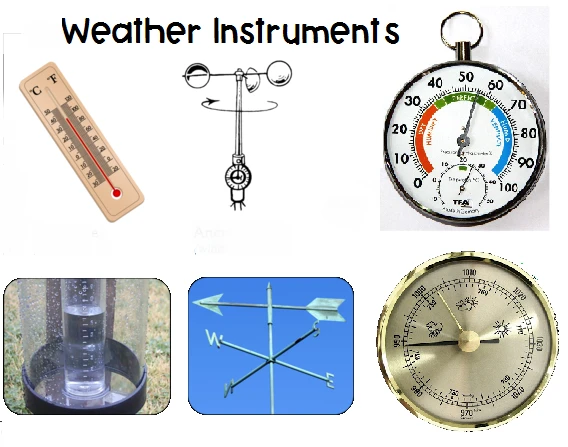The Instruments of the Weather

# The Instruments of the Weather
## Understanding Weather Instruments
Weather plays a crucial role in our daily lives, and understanding it requires precise measurements. Meteorologists rely on various instruments to collect data about atmospheric conditions. These tools help predict weather patterns, issue warnings, and provide valuable information for agriculture, aviation, and other industries.
### The Essential Weather Tools
Let’s explore some of the most important instruments used in weather observation:
#### 1. Thermometer
The thermometer measures air temperature. Modern digital thermometers provide quick and accurate readings, while traditional mercury or alcohol thermometers are still widely used. Temperature data helps determine weather patterns and seasonal changes.
#### 2. Barometer
This instrument measures atmospheric pressure. Changes in pressure often indicate approaching weather systems. A falling barometer typically suggests stormy weather, while rising pressure indicates fair conditions.
#### 3. Hygrometer
Humidity levels are measured by hygrometers. These devices help determine how much water vapor is present in the air, which affects how we perceive temperature and influences weather formation.
#### 4. Anemometer
Wind speed is measured using an anemometer. The most common type has three or four cups that rotate with the wind, with the rotation speed converted to wind speed measurements.
#### 5. Wind Vane
Also known as a weather vane, this instrument shows wind direction. It’s typically mounted on high points like rooftops or towers to get unobstructed wind flow.
#### 6. Rain Gauge
Precipitation measurement is done with rain gauges. These simple but effective instruments collect rainfall over a set period, helping track precipitation patterns and drought conditions.
## Advanced Weather Measurement Tools
Beyond the basic instruments, meteorologists use more sophisticated equipment:
### Weather Balloons
These carry instrument packages called radiosondes high into the atmosphere, measuring temperature, humidity, pressure, and wind data at various altitudes.
### Weather Satellites
Orbiting satellites provide comprehensive views of weather systems, cloud cover, and storm development across large areas.
### Doppler Radar
This advanced radar system detects precipitation intensity and movement, and can identify rotation in thunderstorms that might lead to tornado formation.
## The Importance of Weather Instruments
Accurate weather prediction saves lives and property. These instruments form the foundation of our weather forecasting systems, allowing us to:
– Prepare for severe weather events
– Plan agricultural activities
– Ensure safe air and sea travel
– Study climate change patterns
– Manage water resources effectively
As technology advances, weather instruments continue to improve in accuracy and capability, helping us better understand and predict our ever-changing atmosphere.
Keyword: instruments of the weather